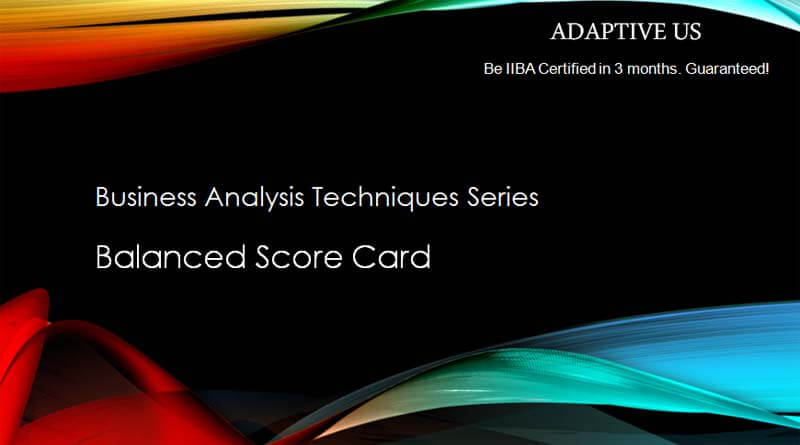Business Analysis Techniques Series – Balanced Scorecard (BSC) is a strategic planning and management tool to measure organizational performance beyond traditional financial measures aligned to the organization’s vision and strategy. It has 4 following dimensions:
Learning and growth dimension
Employee training and learning, product and service innovation, and culture.
Business process dimension
How well the enterprise is operating and if its products meet customer needs.
Customer dimension
Customer focus, satisfaction, and delivery of value.
Financial dimension
Profitability, revenue growth, and added economic value.
Meaningful measures are quantitative, linked to strategy, and easily understandable.
Balanced scorecards should contain 2 types of indicators:
Lagging – Provide results of actions already taken.
Leading – Provide information about future performance.
Strengths
- Monitor progress against objectives and adapt strategy as needed.
- Balanced planning and thinking.
- Encourages forward-thinking and competitiveness.
Limitations
- Lack of clear strategy can make aligning dimensions difficult.
- Stakeholders may perceive this as the only tool for strategic planning than one tool among many.
- Misinterpreted as a replacement for strategic planning, execution, and measurement.
- Learn more about “Business Analyst Certification Training”
Example:
| Key Areas | Goal | Metrics Definitions | Operational Definition | % Allocation | Cum. Allocation |
| Financial | Growth | Revenue | Invoicing Amount | 20 | 20 |
| # of Clients | # of Active Clients | 5 | 25 | ||
| Profitability | Gross Margin | (Revenue – Expenses)*100/Revenue | 20 | 45 | |
| Client | Client Satisfaction | CSAT Rating | Average rating obtained in CSAT Survey | 10 | 55 |
| Client Attrition Rate | # of Accounts closed in the Quarter | 5 | 60 | ||
| Repeat Business % | % of business from old customers / Total business | 10 | 70 | ||
| Employee | Employee Satisfaction | ESAT Rating | Average rating obtained in CSAT Survey | 5 | 75 |
| Attrition Rate | (No. people departing the company during the Quarter)*100 / Average of Employee Strength at beginning and end of Quarter | 5 | 80 | ||
| Execution Performance | Productivity | Productivity | Number of support tickets handled per person month | 5 | 85 |
| Effort Variance | (Actual Effort – Planned Effort)*100/Planned Effort | 5 | 90 | ||
| Quality | Schedule Adherence | % of Deliverables which missed Deadline / Total # of Deliverables | 5 | 95 | |
| Service Quality | # of feedback comments received from Client | 5 | 100 |
If you have any queries related to content kindly ask through the comment box, thanks for reading.









